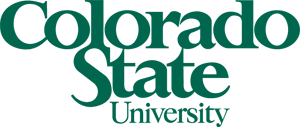Newswise — In the fight against COVID-19, researchers at Colorado State University have developed a new, non-invasive strategy to identify areas at greatest risk for spreading the disease.
Led by Electrical and Computer Engineering Professor Edwin Chong, the team is drawing on data from existing cellular wireless networks to pinpoint potential hotspots for increased viral transmission.
Their technique, detailed in a paper published this month in the IEEE Open Journal of Engineering in Medicine and Biology, could help regions manage risks to avoid scenarios like the recent outbreak in New York City, where the virus inflicted devastation on one of the most densely populated areas in the country.
Coronavirus and crowds
Knowing that COVID-19 is easily spread by individuals in close proximity, Chong and his team developed a method that helps them identify the most crowded areas with hustle and bustle, such as a city center, where asymptomatic carriers have a higher probability of coming into close contact with large numbers of healthy people.
Because practically everyone carries a cell phone nowadays, they aim to understand how mobile device users move and gather over time in an area by leveraging what are known as handover and cell (re)selection protocols - the cellular network technologies that allow us to move about freely with our mobile devices without losing service. Using data collected through these networks, Chong's team measures handover and cell (re)selection activity, called HO/CS rates, to calculate localized population density and mobility. Offering real-time updates, the data allow them to flag at-risk areas for further monitoring. Their method builds on the premise that the higher the HO/CS rates, which means higher density and mobility, the higher the risk of spreading infectious diseases.
"Our findings could help risk managers with planning and mitigation," said Chong, a leading researcher in cellular wireless networks who has expertise in risk management. "It might prompt them to cordon off a busy plaza, for example, or implement stricter social distancing measures to slow the spread of the virus."
Chong said their approach could also be used to estimate the percentage of people staying home to determine whether communities are following recommended public health policies.
Protecting security and privacy
While Chong refers to mobile devices as "always-on human trackers," he is sensitive to and concerned with privacy and security issues. Unlike contact tracing applications that are often difficult to deploy and require widespread adoption, his approach protects the privacy and anonymity of individuals without needing active participation from device users.
"Our method overcomes the downsides of contact tracing apps," Chong said. "All we have to do is perform the measurements using anonymous data that is already being collected for other reasons. We are not tracking individuals."
As the nation steps up efforts to plan for future outbreaks, Chong said their technique has applications beyond COVID-19. "It can help with other epidemiological risks, such as the flu. Regardless of the disease, it's very important to have tools that help risk managers focus and prioritize to protect our citizens," he said.
###
Journal Link: IEEE Open Journal of Engineering in Medicine and Biology
